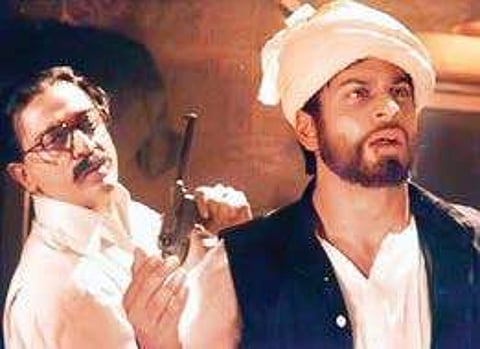

There’s a film that is trending online with rigorous views and reviews, one that released on a Friday 19 years ago — Hey Ram. This was the only instance I saw the audience in Devi theatre, where I saw the film on February 18, 2000, stunned into silence.
This was the first time they had seen the leading man as more than just an ace actor.
Hey Ram showed the world the writer and filmmaker that Kamal Haasan had become. The censors came down heavily on the film, with the then Congress government suspecting the film to be anti-Gandhi (much like some films today are suspected to be anti-national).
Added to the political pressures (way ahead of what he faced with Vishwaroopam), Kamal Haasan had additional trickier knots to handle. One such knot had to do with the film’s music and the other had to do with the censors demanding a zillion cuts and beeps.
The first knot was a tad easier to handle as Maestro Ilaiyaraaja stepped in and took over the background score from L Subramaniam. Ilaiyaraaja gave the film hit songs too, in the mesmerising Nee Paartha Paarvai and the Ram Dhun, (which Gandhi and his followers used to chant/sing during the Salt March to Dandi) Raghupathi Raghava Rajaram sung by Kamal Haasan in his trademark high octave, robust timbre, which became the Hey Ram title song
The second knot however was the precursor to all that we see today happen to many filmmakers across industries, when it comes to creative freedom.
Speaking to me for an interview to a Tamil magazine just before the release of Hey Ram, Kamal, I recall, was a picture of calm. The voices of dissent against him were screaming from newspaper headlines. I was asked to wait for ten minutes in Prasad Studios as Kamal was in the reel-changing room (digital format had not yet set in) and Ilaiyaraaja’s background score work was in progress. I was wondering why a film director had to be changing reels instead of sitting with the music director.
“The operator had to go for his lunch break and Ilaiyaraaja finished his work sooner (Kamal smiled), so someone had to go change the reel for him,” he began as if reading the question on my mind. I also thought how the things Kamal seemed to know in cinema went beyond what we see of him on screen.
Kamal came down heavily on the manner of censorship in India.
“The freedom which was accorded to Bharathiyar must also be given to me. Censorship is a redundant way to process creativity and freedom of expression. Bring in age-centric ratings, like it is in other parts of the film watching world. I’m making a film on my country’s history and for those who say my film or I, am anti-Gandhi, I urge them all to first see my cinema.” The words came out evenly paced and without any sense of panic.
Kamal went on to win the battle against the Censor Board and released the film to much anticipation. The reviews were glowing but the box-office collections didn’t reflect that. Hey Ram was touted to be Haasan’s biggest misstep but he held on. Not one to cower to submission, he immediately let the star in him take over his box-office prospects but never quite let go of his pet theme (India) or his favourite man, Gandhi.
The years rolled by and with the advent of social media, Hey Ram became a hot favourite among the younger breed of filmmakers and film buffs alike. The film went on to win many an international accolade. It became the go-to film for film writers/directors who aspired to make a nuanced, aesthetically good and emotionally-charged period film, with India’s political history as its base story.
Long-form essay reviews in English and Tamil abound on Facebook and Twitter today on Hey Ram. This is also the 150th birth anniversary of Mahatma Gandhi, and I believe Hey Ram captures Gandhi’s influence over the Indian multitude in the best manner possible.
Hey Ram is the story of Saketh Ram, who enters Birla House to kill Gandhi, wrongly presuming he is the reason for the Calcutta Riots which tore the country and his life apart. He then discovers the good intent and love with which Gandhi held the nation together and becomes a “Gandhian” till his last breath. Has the country become a better place with its freedom or does it need more Gandhis now to hold it together? Hey Ram raised a lot of questions, then and now.
A recent announcement from Raajkamal Films International mentions a special screening of Hey Ram at Sathyam Cinemas on November 8. This is a ‘by invite’ screening, which means connoisseurs of Kamal Haasan’s oeuvre as a director (and not just an actor) will be coming together to recollect, celebrate and underline how much of an impact his film still has on our psyche.
With Hey Ram, Kamal Haasan ensured we never forgot that the path to India’s freedom was laden with blood, tears, sweat, toil and selfless love, which as Gandhi embodied, was the only path in which a multi-cultural democracy like India can survive.